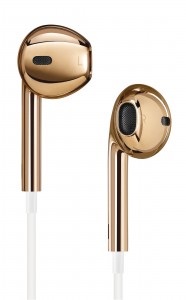This is not like a clumsy gold case for iPhone. 18 K solid rose gold earpods customised by Jony Ive and Marc Newson. A piece of art and jewelry for those looking for alternative investment. Perhaps, iPhone Gold will mean an iPhone with a real gold frame in the future.
Author Archives: Atakan Peker
When Will We See Bulk Metallic Glasses in iPhone?
I do not expect any announcement for significant use of bulk metallic glasses (a.k.a. Liquidmetal alloys) in iPhone 5, 5C, 5S , or whatever combinations of letters with numbers 4 and 5. Not tomorrow, not this year.
I am also resetting my estimated timeline for the implementation of Liquidmetal alloys into iPhone by mid 2015 at the earliest (unlikely) and possibly in 2016, except for limited-production cases (e.g. Vertu and Ubuntu Edge) or small components, e.g. SIM card ejector pin.
My reading between the lines (and tea leaves) is that Apple is stumbling on developing this material technology into mass-production consumer electronics; whatever the issues are.
Although the losing momentum of rumors appears to agree with me, LQMT stock is indecisive on whether the next iPhone will have Liquidmetal alloys or not.
More details on this in a future post.
Did Apple/Liquidmetal Patent Slavishly Copy From …?
In my previous blog entry, I presented an initial review of the Apple/LQMT patent 8485245 titled “Bulk amorphous alloy sheet forming processes” based on the prosecution history from the USPTO. In essence, the Apple/LQMT patent is about the use of float-glass process to make amorphous alloy sheets. Continue reading
An Analysis of the Apple/Liquidmetal Patent
The prosecution history indicates a hastily prepared application
The claimed subject matter is nothing novel and preempted by the prior art
The news of a joint patent by Apple and Liquidmetal caused significant buzz in the media and euphoria in the market. Suddenly, Liquidmetal alloys are deemed to be producible on a massive scale, and expectations of Liquidmetal alloy in the next iPhone or iPad became widespread. Continue reading
The Real iPhone 5
iPhone 5 was unveiled amid few surprises and became the most leaked iPhone ever, even surpassing the “lost in a bar” iPhone 4. Unibody housing, two-tone metal backplate, taller screen were among features widely discussed prior to the official release. Continue reading
iPhone 5 and Unibody Design
Unibody design is one of the leading expectations on iPhone 5. A puzzling feature on the so-called leaked iPhone 5 pictures is the two-tone metal backplate as featured in Cult of Mac. Don Lehman wrote a detailed article on this and provided a good explanation on the reasons behind the two-tone metal backplate. Continue reading
